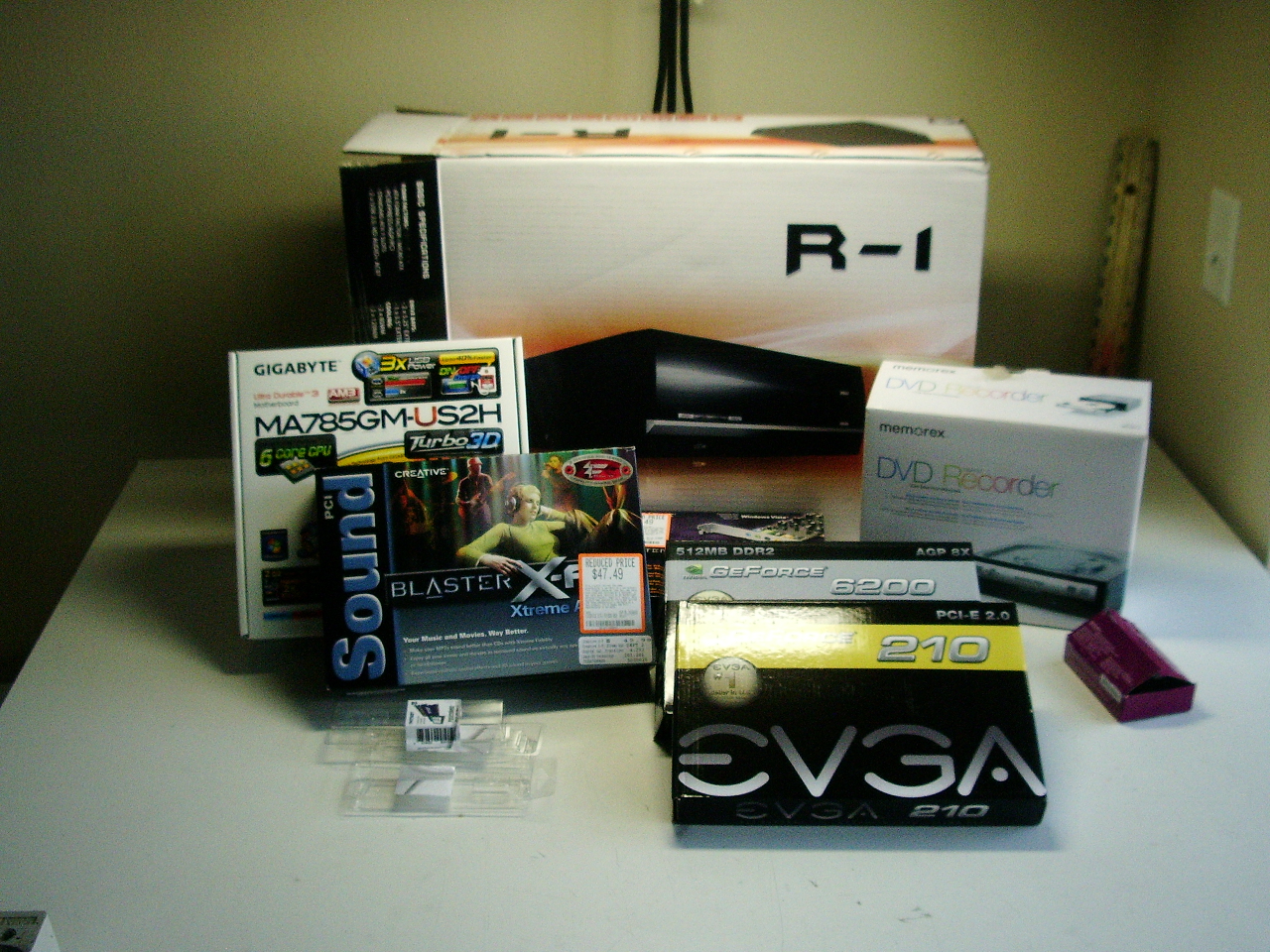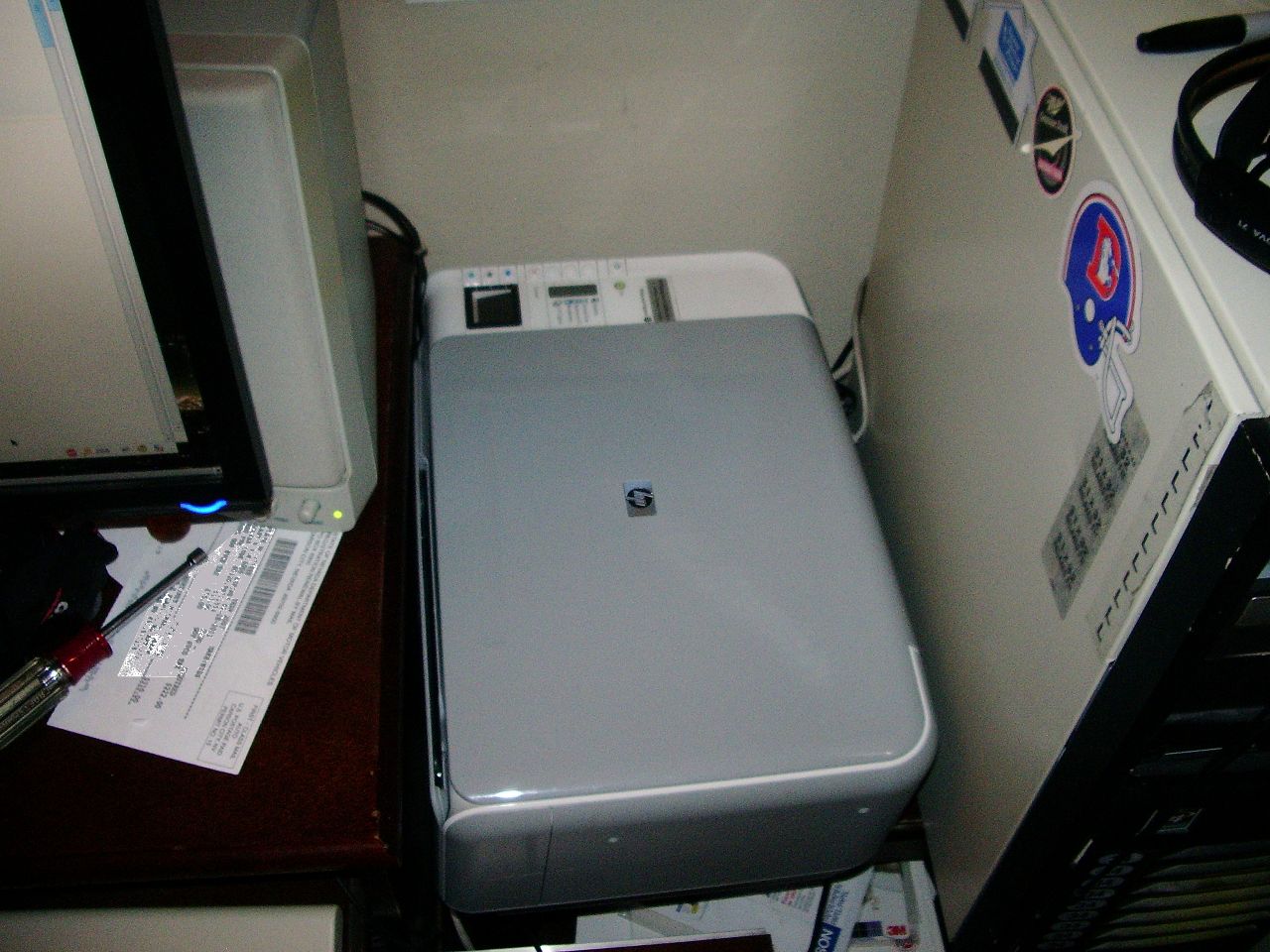
Lavi spends countless hours attempting to graft modern applications onto a now woefully inadequate platform.
-D
Keeping in mind that, throughout this ordeal, the entire goal was to just get back functionality I already had, this is what happened:
After months of flaky operation, the AGP video card in my Windows box went out.
I bought a new AGP card.
As it turned out, my Linux machine also had an older AGP card. So I took the new AGP card and put it in the Linux machine and put the Linux machine's AGP card in the Windows box.
The 80G hard drive in the Windows box then promptly died.
I decided to rid myself of Windows once-and-for-all. The Windows machine was an AMD K6 running at a blazing 266Mhz. I had Win2k on it and I only used it to run my scanner which didn't work under Linux. I figured I could run the scanner using W2k in a virtual machine in Linux if I got a faster motherboard and processor.
The MB and CPU in the Linux machine was a 2005 vintage (socket 939) AMD dual-core x86_64 running at 2.2Ghz.
I picked up a Gigabyte MB with an AMD Phenom Quad-core 64bit proc. running 3.2Ghz.
I also had an ITX HTPC (Home Theater PC) that I built that was not really that satisfying. So I decided to use the dual-core AMD proc and MoBo to upgrade the HTPC. But I needed an ATX case.
So, I bought a plain-Jane desktop case and replaced the ITX HTPC with the old 939 motherboard and put the new Gigabyte in the original Linux box.
Days of re-configuration followed this series of stunts. I had to completely rebuild the HTPC and I tried gamely to get the Linux box (running Fedora 12) to limp along as if it hadn't just had 50% of its internal organs replaced.
I was able to scan using W2k in a VM, however, so things were looking good.
That was, until I discovered that the new Linux machine couldn't do two things that I used to do: 1)Record audio from another application - like a Flash video - and, 2) watch TV using a TV Tuner card.
After days of fighting, I decided to completely reinstall the ALSA (Advanced Linux Sound Architecture) packages. When I went to remove the base package, it declared that it was going to take a lot of stuff with it. As it turns out, one of the things it took was the X-Windowing environment, which had the effect of rendering the machine ASCII only.
This forced me to upgrade Fedora to 14 rather than trying to rebuild the windowing environment by hand.
I ended up buying a new sound card and video card in order to bypass the audio and video chipsets in the Gigabyte MB. After days of fighting with PulseAudio, I was finally able to get the recording thing working. I never did get TV going again - that's going to have to wait until my desire for TV on the computer overwhelms my current level of aversion for intense technnical frustration.
Then the scanner died. At first I thought it was just the power supply - the power supply was dead - but after replacing it, I found that the scanner was just as unresponsive.

Unfortunately, Linux is very picky about what scanners it will work with, fortunately, Dee Dee's scanner works great.

3 comments:
Lavi could buy something off-lease. Here's an example from discountpc.net: $500 for a Dell Precision 690 - Dual Core Xeon 5130 2.0 GHz - 2 GB RAM - 160 GB HDD - CD-RW and DVD-RW - Windows XP
I agree - it's not nearly as much fun, but it works when you take it out of the box.
Dead scanners are beyond the scope of this blog comment.
and even if you decide to transmorgify it later, at least you'd be starting from a place where you knew that everything worked.
Maybe you can run linux inside a virtual windows machine running on linux...
Recursively - elephants all the way down...
Someday you may mature to the mental age of just accepting things as they work - right out of the box - without trying to make them more betterer and risking breaking them.
Do you bolt on glowing and flashing red eyes to the 99 cent toy robot you had as a kid, too?
Just because it is there, doesn't mean it has to be disassembled.
Capture word: rehab
Post a Comment